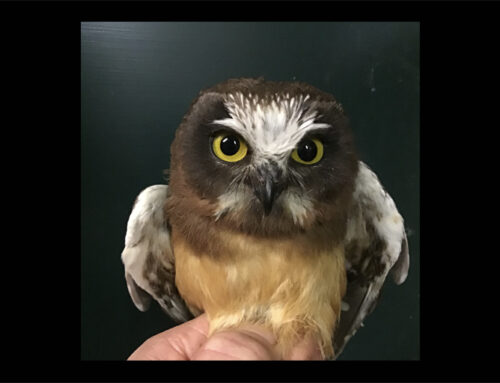The March nights have continued to be productive since our first post, and we’ve seen the first signs of the diversity that makes Whitefish Point such an amazing owl migration site. A couple of hours after publishing the last owl blog, the first Boreal Owl of the season arrived. We love Boreal Owls. On the night of March 23, we saw the first Long-eared Owl of the season. We love Long-eared Owls. The Northern Saw-whet Owls have remained curiously steady early in the season. On nights when the weather has provided little hope, we have banded more than we anticipated. On nights when the weather has caused us to hope for the first real push of the season, the numbers have been lower than we had hoped for. Regardless of our regularly incorrect predictions, the Saw-whet migration has been steady so far this spring. To date, we have banded 89 Saw-whets and caught nine that were previously banded. We love Northern Saw-whet Owls. We really do love all of these owls, and every spring we are reminded of how fortunate we are to work with these amazing birds.

Like most of the season’s saw-whets, the season’s first Boreal Owl was in very good shape with great muscle mass and bulging fat stores.

The Boreal Owl’s wing showed three generations of flight feathers, letting us know that she has now made it through at least three winters.
Something that we were surprised by at first, but that we have now come to expect, is the fact that the owls are often in particularly good shape at this time of the year. It’s natural to think that owls struggle through the winter. Without a doubt, there are certain winters when crashes in prey populations and harsh winter conditions can take their toll on raptors, causing many to starve. Additionally, there have been studies on certain raptor populations that have estimated mortality rates as high as 60% for birds in their first year of life. We have not seen anything specifically on saw-whets in this regard, but these facts had us anticipating that owls would be in particularly poor shape at this time of year.
In 2007 we began recording visual scores of the muscle mass around the breast bone, or keel, and of fat stores in the furcular hollow. The furcular hollow is a depression above the breast bone where fat is stored. As we have often seen in the past, the Saw-whets migrating through the Point this March are in great shape with lots of muscle and great fat stores. Some of them have had so much fat stored that it is bulging out of the hollow, actually eliciting verbal congratulations from us — “Good job little buddy!” — for having kept themselves so well fed through the winter. It is actually in the summer that we see the adults in the roughest shape, not emaciated, but with low muscle and fat scores. They clearly make some sacrifices for the sake of providing food to their young. Hopefully, the nights will continue to be productive and we’ll keep seeing lots of muscle and fat on the owls.
Chris Neri & Nova Mackentley
WPBO Owl Banders



